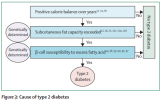Diagnosed T2, Oct 2023 - HbA1c: 89 mmol/mol (repeat @ 92), Weight: 100.6 Kg, BMI: 34.6
Made diet changes, increased exercise gradually, set out to lose weight via calorie counting.
Did not adopt a very low carb diet - averaged around 150g per day.
Started Metformin,1500mg per day as of Nov 15th.
Switched to Xigduo (10mg Dapagliflozin & 2000mg Metformin per day) as of Dec 21st.
Jan 24th 2024 - HbA1c: 39 mmol/mol, Weight: 88.5 Kg, BMI: 30.4
Feb/March - Reduced carbs quite a bit while analysing BG response using a CGM/screenshots.
June 26th 2024 - HbA1c: 32 mmol/mol, Weight: 70.2 Kg, BMI: 24.3
September 6th 2024 - Meds reduced - 10mg Dapagliflozin (Forxiga) & 1000mg Metformin per day
The plan and situation:
Followed Prof Roy Taylor's ideas regarding weight loss as a means to achieve T2 remission.
Had set target of a BMI of 25 to facilitate option to clear fat from liver a second time, if necessary.
If fasting blood glucose levels begin to rise again will lose weight again in an attempt to resolve.
Going all the way to an 'ideal' weight denies a person this option in future, if needs must.
Not in technical remission, still on meds. No side effects. Plan to reduce meds very gradually.
Planning to address all known risk factors for NAFLD as a kind of blueprint to maintain low HbA1c.
This means lifting my weights regularly - hoping to build muscle mass slowly over time.
Profit! (South Park reference)
Very best of luck fellow travellers!


